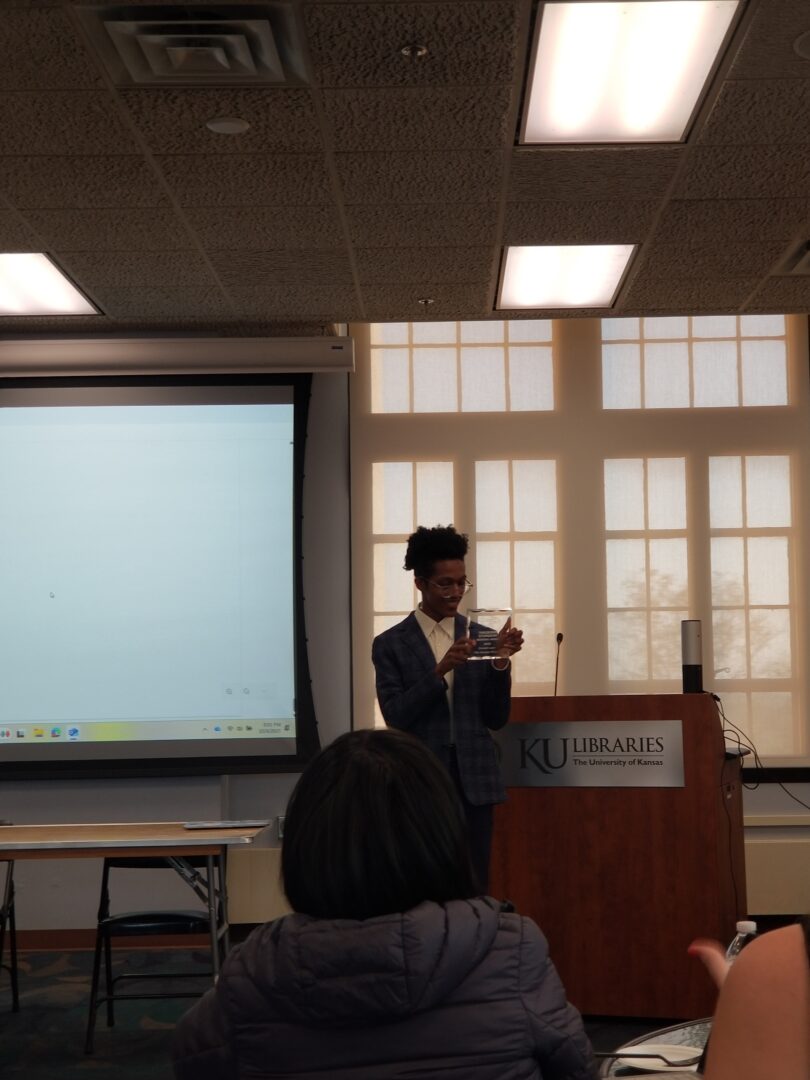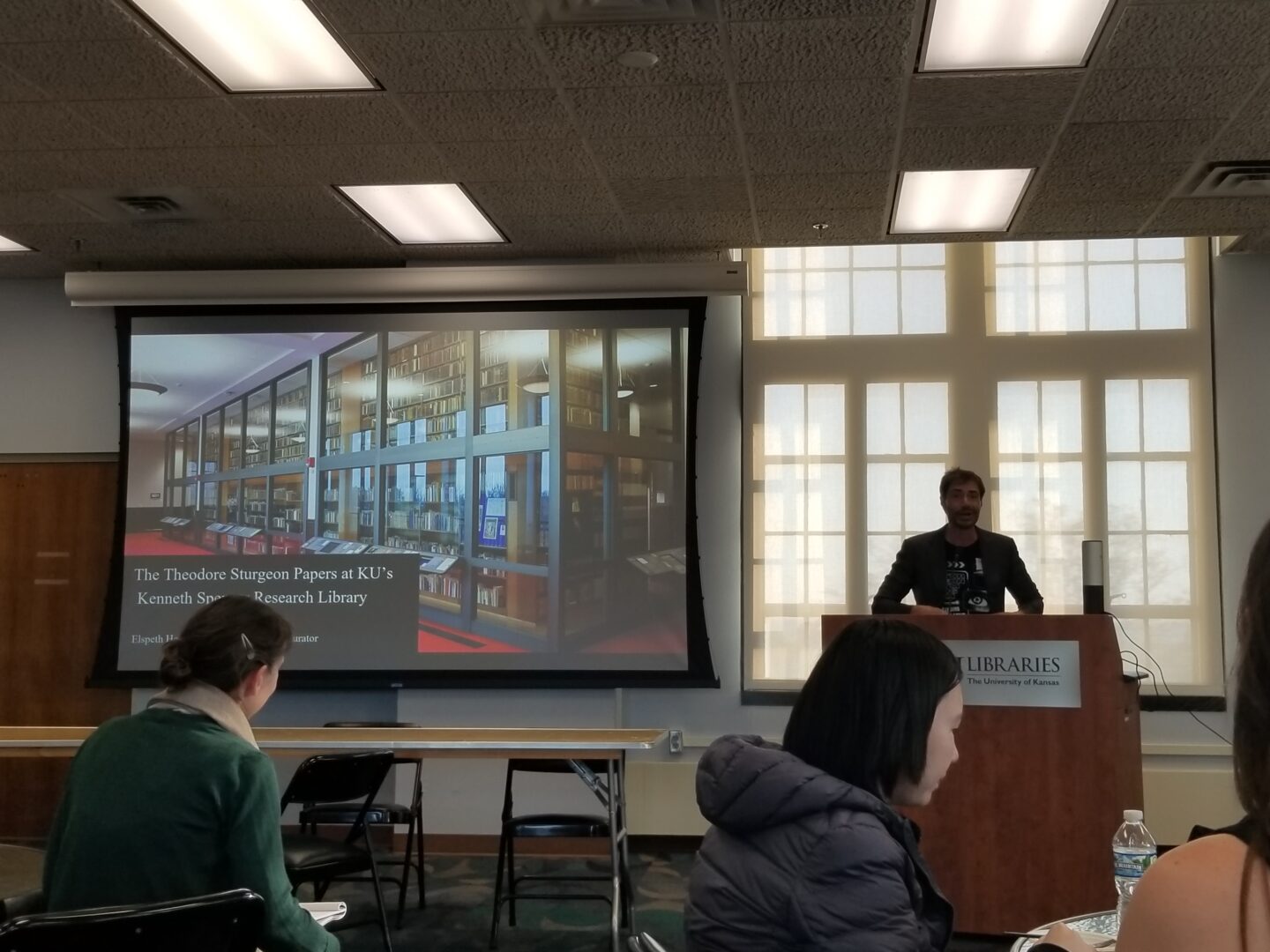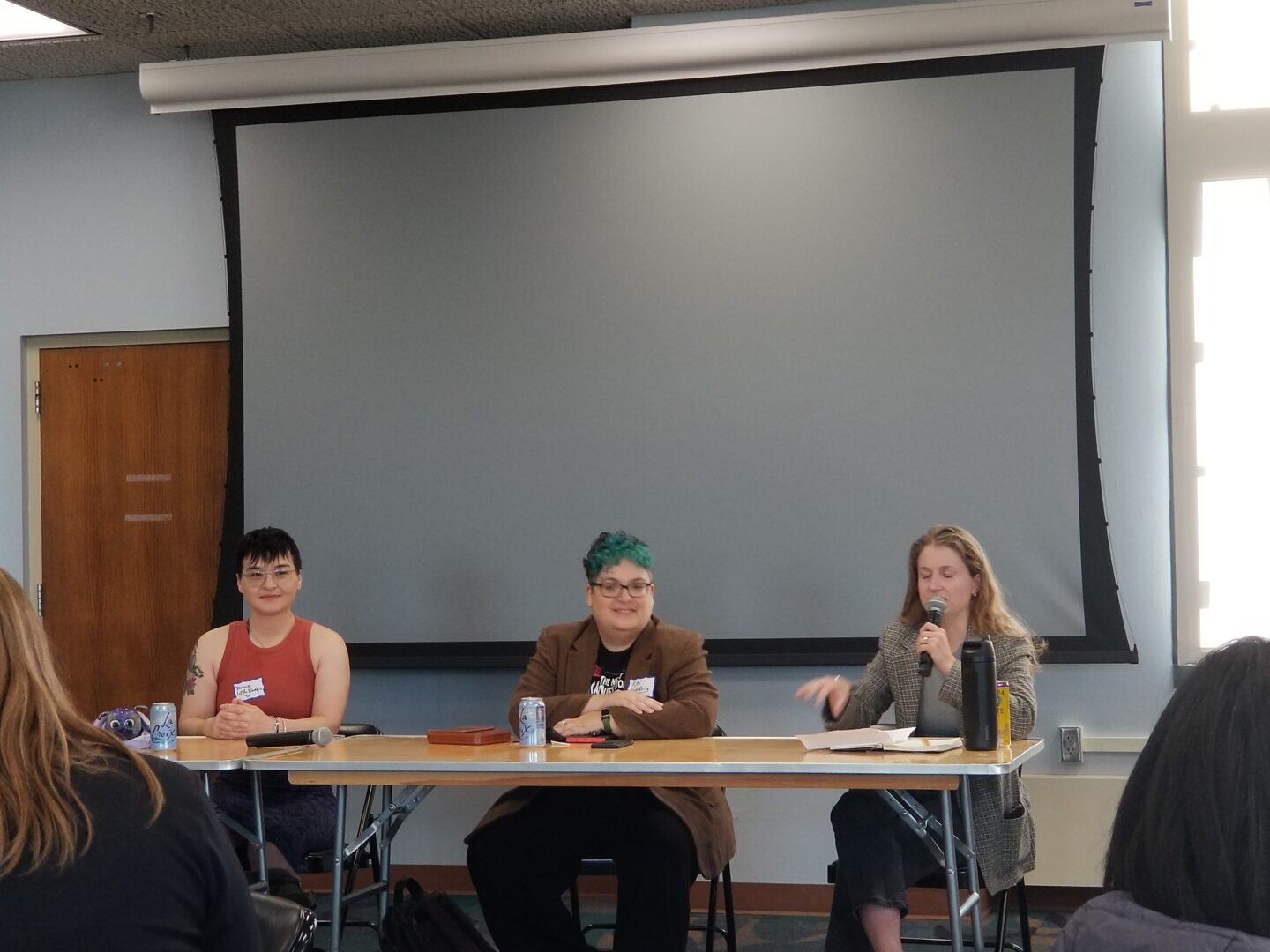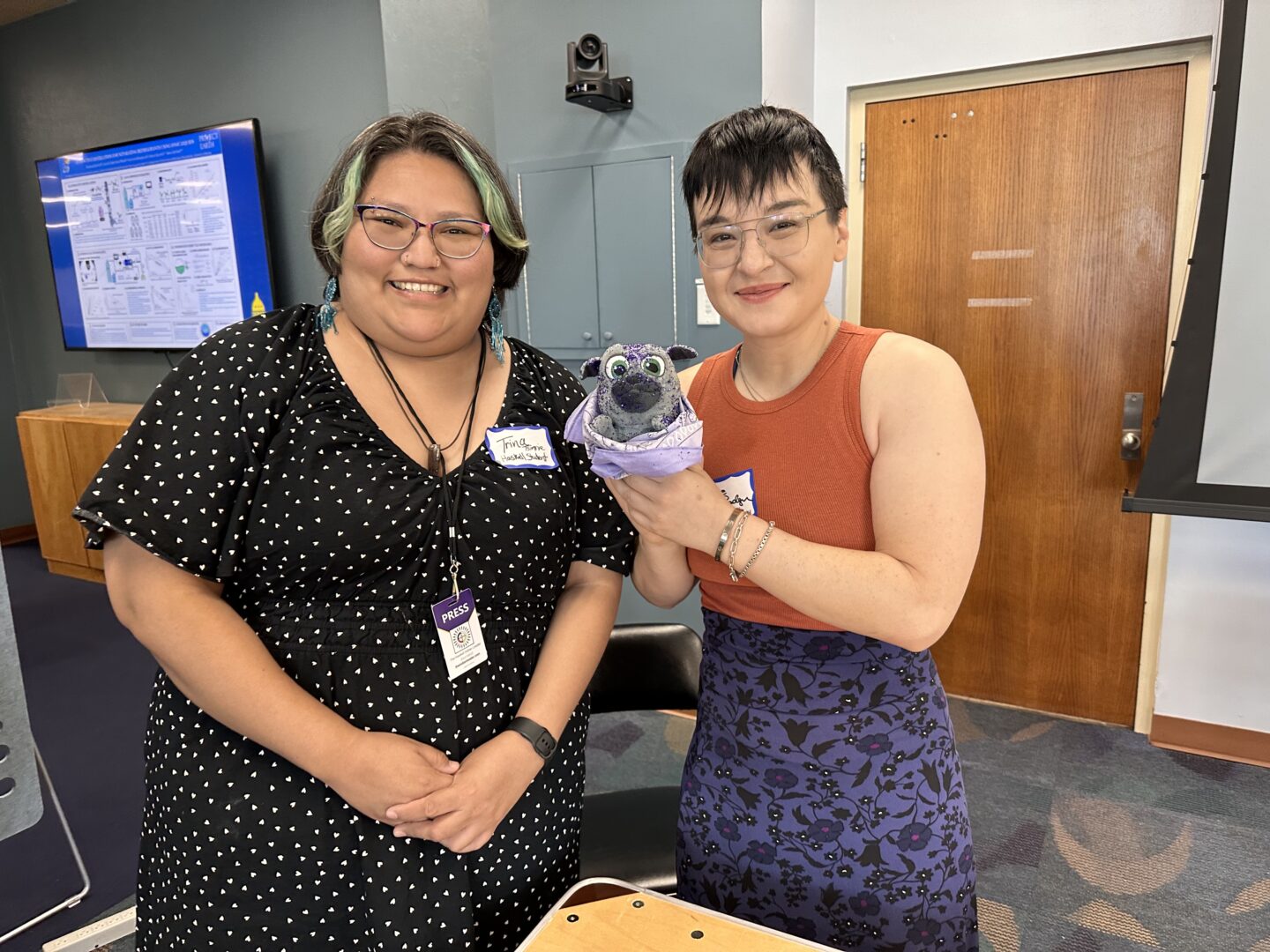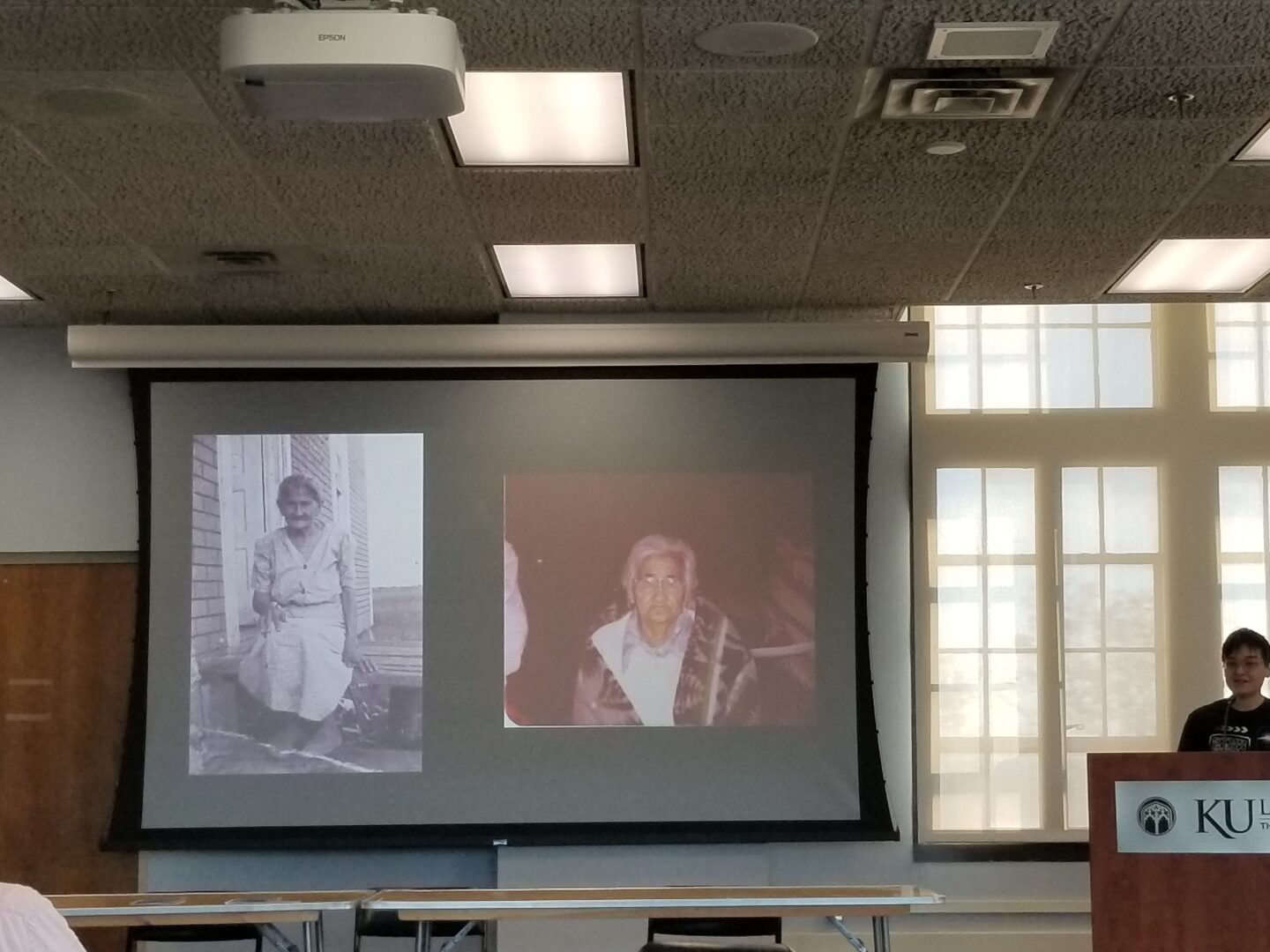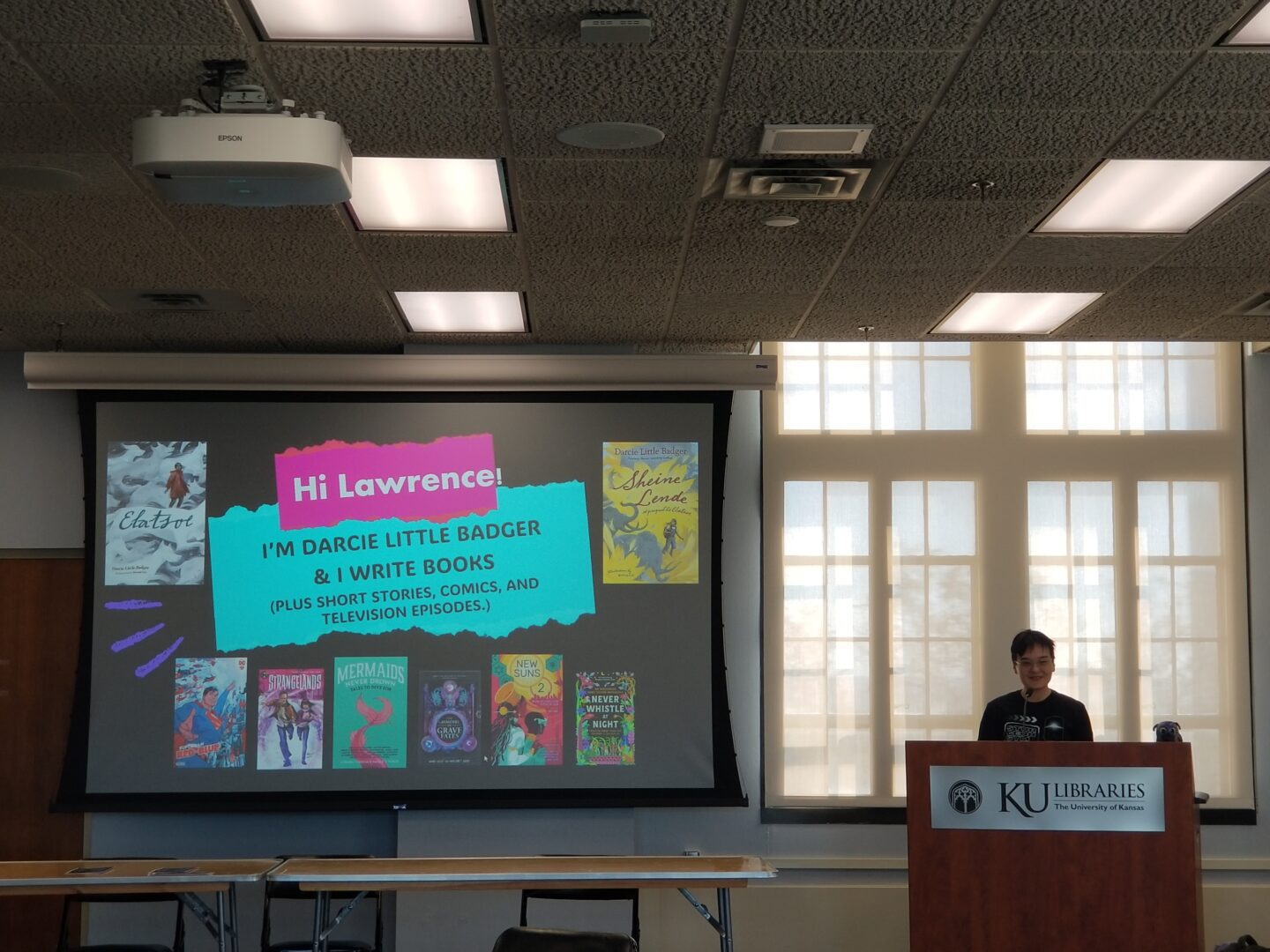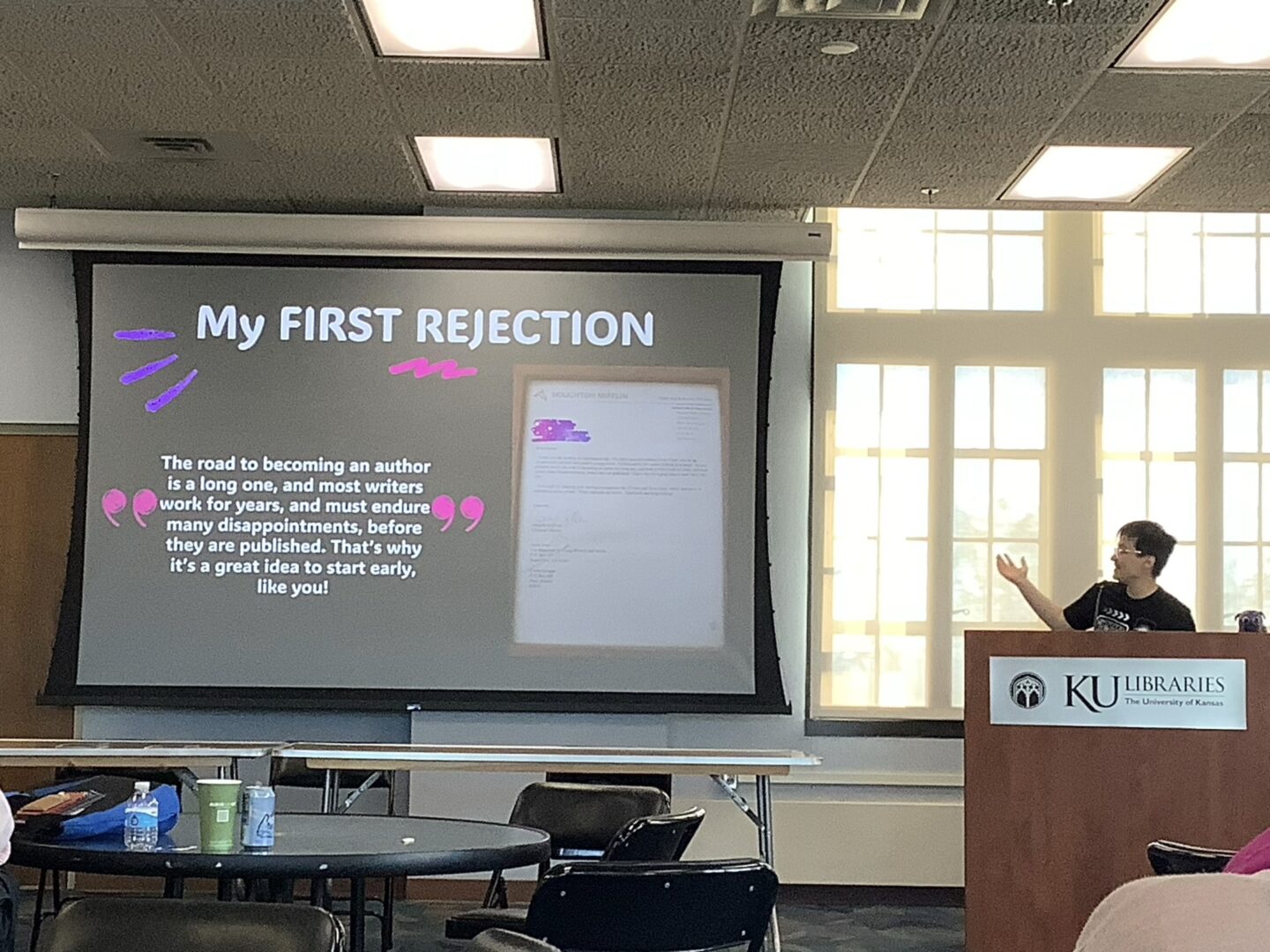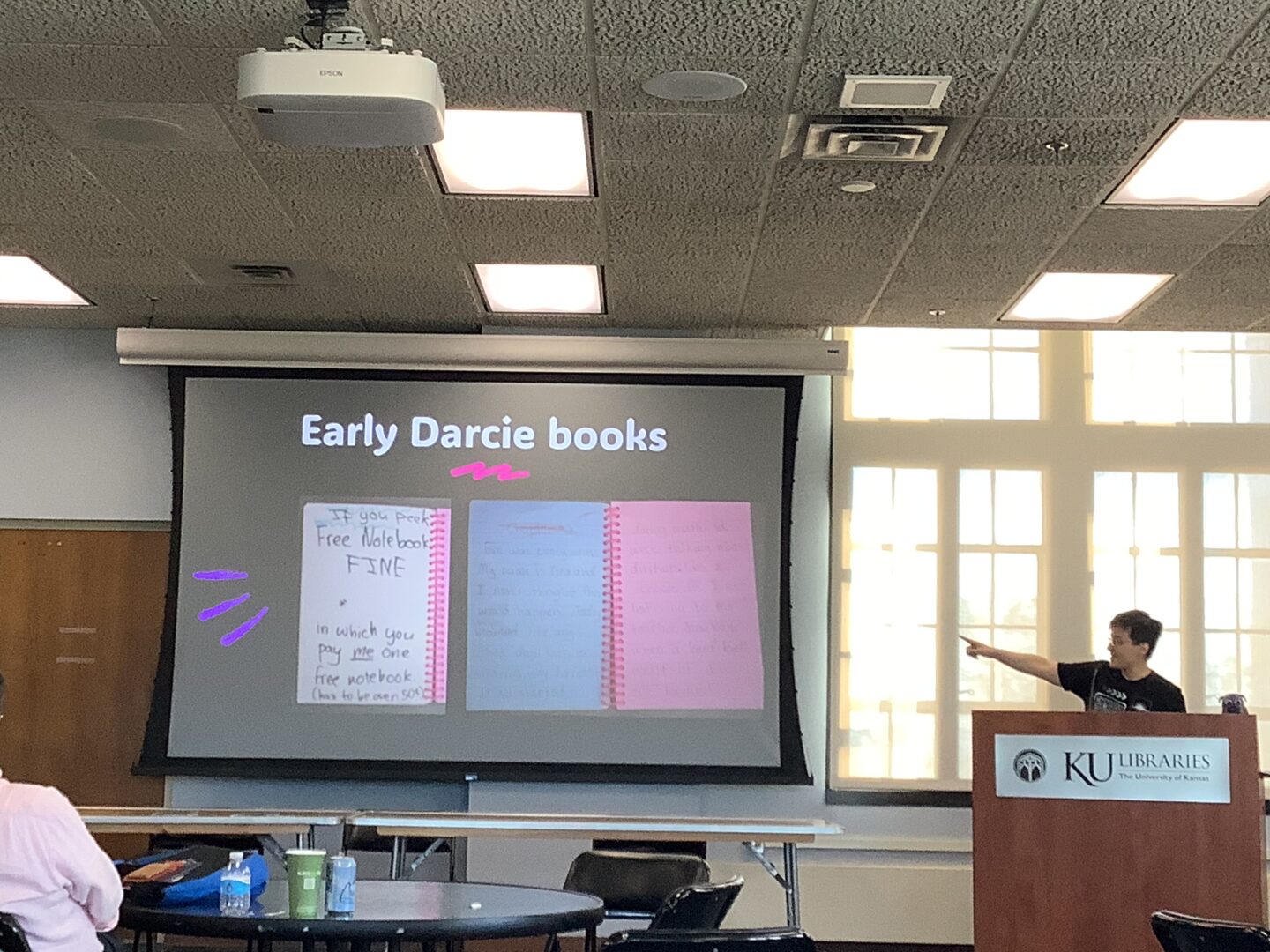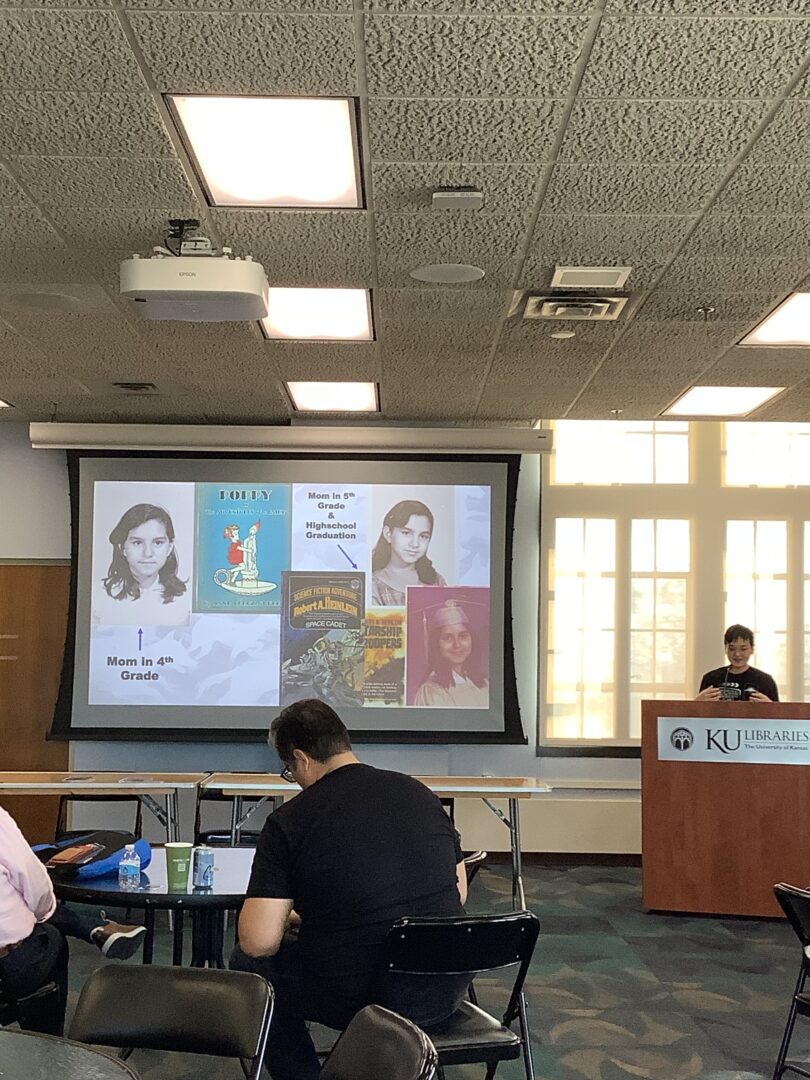By Trina Tsinnie
On October 9-10, 2025, KU had its fourth annual Sturgeon Symposium at the Watson Library. Since 1892, the J.Wayne and Elsie M. Gunn Center for the Study of Science Fiction (CSSF) has offered courses, classroom resources, writing awards, public events focused on shared inquiry, celebration, and creation of genres such as science fiction, fantasy, Afrofuturism, fabulist fiction, horror, fan fiction, speculative poetry, neo-gothic narratives, and posthumanism.
At CSSF, we believe that through our encounter with different worlds, we come to know the one we all share; we also become better equipped to create new possibilities within it. Our ongoing mission is to foster a global community of students, scholars, artists, educators, and enthusiasts interested in exploring the limitless potential of the human imagination, whether to question, to play, or to dream the future.
This year’s theme of the Sturgeon symposium is “Expanding Speculative Horizons.” It is exactly as it seems, a place where like-minded communities come together. Throughout the day, the event held different panels. Attending the Sturgeon symposium as a Haskell student was an amazing opportunity for those who are interested in the fusion of science and literature. The first day of the symposium consisted of a few panels, like Graziela Drago: “Rock, Tree, and Motion: a reading on the temporal theory in The Dispossessed by Ursula K. Le Guin”, a group discussion on (Re)structuring the Future. There was also the author roundtable that included the following authors Darcie Little Badger, R.B. Lemberg and Silvia Park.
Darcie Little Badger is a Lipan Apache writer with a PhD in oceanography. Her critically acclaimed debut novel, Elatsoe, was featured in Time Magazine as one of the best 100 fantasy books of all time. Elatsoe also won the Locus award for Best First Novel and is a Nebula, Ignyte, and Lodestar Finalist. She has a second fantasy novel, A Snake Falls, a third book Sheine lende is a prequel to Elatsoe and is currently working on her next novel.
R.B. Lemberg (They/Them) is a queer, bigender author and scholar original from L’viv, Ukraine. R.B.’s speculative fiction has been shortlisted for the 2023 LeGuin Prize, and was a finalist for the Nebula, Ignyte, Locus, World Fantasy, Otherwise, and other awards. Their Birdverse novella Yoke of Stars is forthcome from Tachyon in 2024. R.B. research interests include socialinguistics of Jewish and Slavic languages, translation studies, LGBTQIA+ studies, and science fiction studies. They have written Yoke of Stars, Everything Thawas, Geometries Belonging, The Unvalanceing, The Four Profound Weaves, and Marginalia to Stone Bird.
Silvia Park is the author of the novel Luminous (Simon &Schuster, 2025). Before Kansas, she taught creative writing Oberlin, the University of Utah’s Asia Campus, and NYU, courses ranging from Speculative Fiction to Digital Storytelling. Her specialty slants speculative, applying it as a lens to render the strange ordinary and the ordinary strange. Her fiction won the 2018 Fiction Prize from the Sonorra Review and was chosen as a finalist for the 2019 Black Warrior Review Contest. Her stories have been published in Black Warrior Review, Tor.com, The Best American Science Fiction and Fantasy, and elsewhere.
Each author talked about their writing process, their background story of how they got into writing, and their trials as a writer. After the author panel, the Sturgeon Award Ceremony was announced. The winner of the 2025 Sturgeon Award, Conrad Loyer, later read his short story.
On Friday October 10th 2025, more panels presented, like the Intersectional Approaches to Science Fiction by Abagail Clifton: “Savage Conversations: Haunting as a Hope and Freedom Technology” There were a few of a panels that I enjoyed like Rachael Anreini: “’ The Animal within Me Licking’: Jekyll/Hyde Metaphors in Current Cancer Research”, and Miguel Angel Albujar- Escuredo: ‘Fungal Horror and Mycelial Intelligence: Non-Human Aesthetics in Barragán Castro’s ‘Cephalomorphs’” and Sean Gullickson: “Punking the Cyber: How The Red Strings Club Weaves Humanity into a Corpo-dystopian Future”.
Finally ending with a reading from Darcie Little Badger. Darcie did a reading from her manuscript of the children of the Owl. After the reading, Darcie talked about her family and the discovery of her family tree. Darcie’s mother would visit the local library as a child. To her mother, it was a safe place to be and to learn. There she learned to love sci-fi and fantasy. Because her mother and father loved books, Darcie loved to read as a child. One of her favorite books she loved as a child, just like her mother, was Poppy the Fairy. Her mother also passed down traditional stories that were also passed down through the maternal line. Hearing these stories from her parents made her want to be a storyteller. She wrote her first novel, which was forty pages, at seven years old on her parents’ old school computer, which printed out on long continuous printer paper that looked like an old receipt. Her father, who was an English student, helped her edit and send it to a publisher. She shows pictures of her book and her first rejection letter.
Darcie thought she would go to college and study writing and get her first published book in her 20’s but unfortunately, she was rejected for the creative writing program at Princeton twice and then in her senior year take a creative writing class. She then decided to be a scientist instead in oceanography. She was in white Sands, New Mexico. She described the place like an alien environment. White Sands was isolating place just like Sargasso Sea feeling far from everyone on the ship where her idea of short story Né Łe. Né Łe is a short story about a veterinarian in space with four chihuahua which was later published. She slowly started writing short stories themed fantasy and sci-fi publishing in magazines and online. There she started to get popular and noticed. Darcie was given the chance to write an article for the Texas Observer about the return of the Lipan Apache burial ground. The first time Texas ever returned lands to the Lipan in 2021, they wanted to return the remains to their home so they did a DNA from the bones and found the closest living relatives which matched her mother and herself. They were able to lay rest on the remains in the burial grounds and because of the match to Darcie the Texas Observer asked if she could write the article so people will know what’s happening and that we are still fighting for our land and rights as people.
O & A with Darcie Little Badger
Q: Writing in such a way to connect with your heritage, was it something you found naturally or was it a conflict choice?
Little Badger: A lot of it was unconscious, and I was thinking why don’t write as much about my dad side because my dad never really informed me of his side of the family. I do make the conscious effort that will highlight issues that are particularly important.
Q: Do you have in your community or tribe have been any conflict about what you written?
Little Badger: Some our traditional stories tell of the afterlife. I would say a super traditionalist would not want to do that but it’s not something I have in conflict with yet, but my tribe is more open particularly about that subject. I would say Owls have the big taboo against many different tribes across the U.S. I was thinking of doing a warning label in the biggening of the Children of the Owls saying that this story deals with the big owl, but then again, I thought this is the Lipan owl and it’s different than other owls. I’m in a writing group with other native people and they don’t even look at the animal. So, in the book I’m not going to draw the animal, it’s just a young man with wings that will represent the owl people.
I have a few thanks to give out, firstly I want to thank Carrie Cornelius for this opportunity and secondly, I would like to thank Phillip Drake for welcoming me to this event. I would also like to thank Darcie Little badger for the reading and being at the event. I had a fun time, and I learned a lot, and I would like to thank the professors and authors and the KU staff. I would love to visit the next sturgeon symposium

